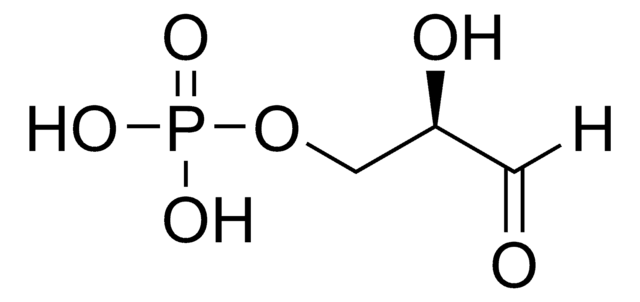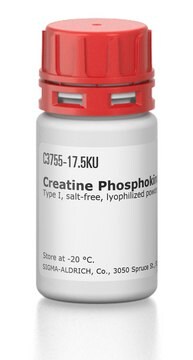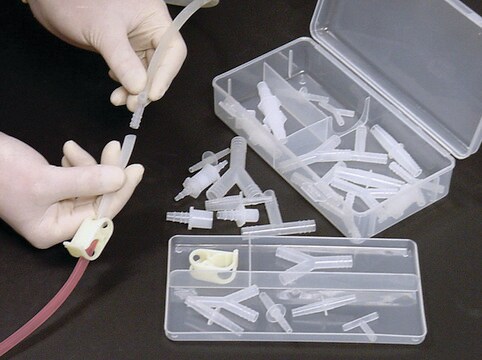G6019
Glyceraldehyde-3-phosphate Dehydrogenase from human erythrocytes
lyophilized powder, 50-150 units/mg protein
Synonyme(s) :
D-Glyceraldehyde 3-phosphate:NAD+ oxidoreductase (phosphorylating), GAPDH
About This Item
Produits recommandés
Forme
lyophilized powder
Niveau de qualité
Activité spécifique
50-150 units/mg protein
Composition
Protein, 40-70% biuret
Numéro d'accès UniProt
Activité étrangère
3-Phosphoglyceric phosphokinase ≤2%
Température de stockage
−20°C
Informations sur le gène
human ... GAPDH(2597)
Actions biochimiques/physiologiques
Définition de l'unité
Forme physique
Inhibiteur
Code de la classe de stockage
11 - Combustible Solids
Classe de danger pour l'eau (WGK)
WGK 3
Point d'éclair (°F)
Not applicable
Point d'éclair (°C)
Not applicable
Faites votre choix parmi les versions les plus récentes :
Déjà en possession de ce produit ?
Retrouvez la documentation relative aux produits que vous avez récemment achetés dans la Bibliothèque de documents.
Les clients ont également consulté
Articles
We presents an article about the Warburg effect, and how it is the enhanced conversion of glucose to lactate observed in tumor cells, even in the presence of normal levels of oxygen. Otto Heinrich Warburg demonstrated in 1924 that cancer cells show an increased dependence on glycolysis to meet their energy needs, regardless of whether they were well-oxygenated or not.
Notre équipe de scientifiques dispose d'une expérience dans tous les secteurs de la recherche, notamment en sciences de la vie, science des matériaux, synthèse chimique, chromatographie, analyse et dans de nombreux autres domaines..
Contacter notre Service technique










